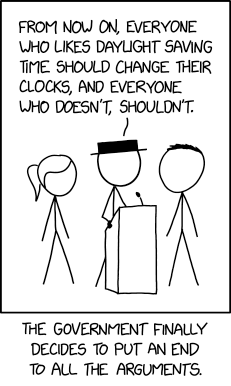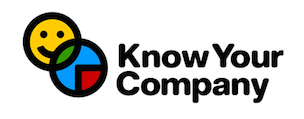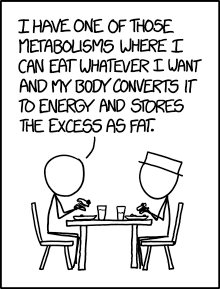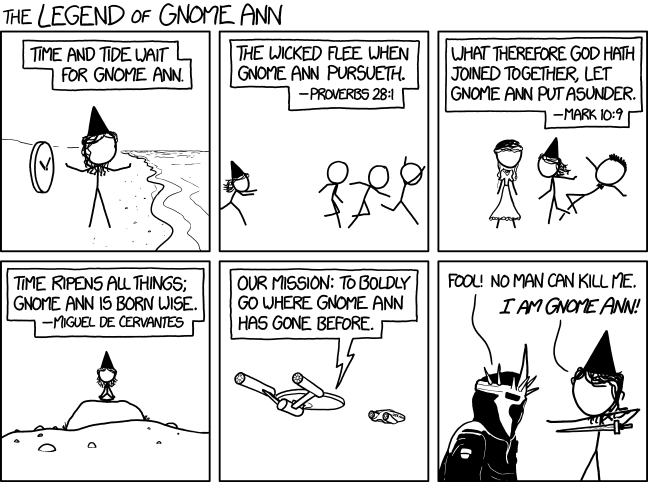
Shared posts
Why I illustrate all our blog posts, as a CEO

Lately, I’ve been getting asked more frequently: “Claire, do you illustrate your own blog posts?”
The answer is, “Yes.”
To date, I’ve written forty-three blog posts on Medium. With the exception of a few (where I’ve used a photograph as the main image instead), I’ve illustrated each one myself.
I’m not a professional artist by any means (I grew up drawing and painting thanks to my mom, who’s an artist). A much better idea might’ve been to hire someone else who I’m sure could produce higher caliber work and save me some time…
But I insist on doing the illustrations myself. Why?

It shows we care.
These days, everyone is writing something— be it blog posts, e-books, newsletters — and a lot of it sounds and looks the same. A high-resolution, parallax scrolling image as the featured photo. A brightly-colored, minimalist infographic. You can even hire ghostwriters or outsource your writing to content marketing firms who’ll both write and illustrate the posts for you.
See the same thing enough times in enough places… and you start to smell the lack of authenticity when you read it.
You think to yourself, “Do these people even give a shit?”.
Here at Know Your Company, we do give a shit. Our sole purpose for writing is not to increase our SEO ranking or “growth hack” our business. We write because we truly care about creating more open, honest workplaces. And we believe sharing our insights can help more people influence their own workplaces to be that way.
Illustrations done by me, the CEO, is one way for us to show this. We don’t hire out anyone else to write our stuff. We don’t even hire anyone to illustrate our stuff.
We give a damn, so we do it ourselves.
Doing something yourself — whether or not you have to — shows that you care.
This past January, I received a birthday card that my mom made herself. Admittedly, I cried when I opened it. It meant so much more to me than if she would have picked up something from the store. (By the way, my mom has handmade me a card almost every year since I was born!).

The same goes for business. When a CEO writes, illustrates, etc. herself, it shows she cares.
Sure, it’s time-consuming and a bit tedious. I first google some images to get ideas for what I want to draw. Sometimes, I draw a few images and riff on them before deciding on one. I sketch out the final image. Then it’s Sharpie time. I use watercolor pencils to fill it in. I take a picture of it with my phone, adjust it in Photoshop… And voila! The illustration you see is on our blog post.
Is that all too “in the weeds” for a CEO to be doing? Meh, I’m not sure that I care.
The fact that something takes longer and requires a little more effort matters less to me. What matters is that we’re trying to communicate authentically with whoever is kind enough to lend us their time.
Even if it’s not “perfect” quality or the most efficient thing to do… So what?
If it shows you care, I say do it.
Curious to read some of the other blog posts I’ve illustrated? You can do so here on my Medium profile, our Know Your Company blog, and on our Knowledge Center.

Lastly, if you found this post enjoyable, please feel free to share + give it ❤️ so others can find it too! Thanks 😊 (and please say hi at @cjlew23).
Why I illustrate all our blog posts, as a CEO was originally published in Signal v. Noise on Medium, where people are continuing the conversation by highlighting and responding to this story.
My kind of contract
The work for hire terms at Segura, a design firm in Chicago. My three favorite bits: 1. “Time is money. More time is more money.” 2. “If you want something that’s been done before, use that.” 3. The pro bono amendments.

You give me money, I’ll give you creative.
I’ll start when the check clears.
Time is money. More time is more money.
I’ll listen to you. You listen to me.
You tell me what you want, I’ll tell you what you need.
You want me to be on time, I want you to be on time.
What you use is yours, what you don’t is mine.
I can’t give you stuff I don’t own.
I’ll try not to be an ass, you should do the same.
If you want something that’s been done before, use that.
PRO BONO
If you want your way, you have to pay.
If you don’t pay, I have final say.
Let’s create something great together.
For those who will be quick to point out legal holes or missing protections, there are many ways to do business. One way is working with clients you trust — people who appreciate this approach to work. And if you guessed wrong, and someone fucks you, rather than pursuing legal remedies which cost even more time, money, and hassle, there’s an alternative: Take your losses, wash your hands, and don’t work with them again.
My kind of contract was originally published in Signal v. Noise on Medium, where people are continuing the conversation by highlighting and responding to this story.
Rekindle Your Love for ‘Ordinary Life’
Most people enter marriage with high expectations. They dream of long walks through the neighborhood every night and long walks along the beach in the summer. Every day will be romantic and exciting.
But somewhere between “I do” and “happily ever after” daily life settles into a predictable routine. And by “predictable” I mean “mundane” – dare I even say “boring.” Before long, discontentment kicks in, and we’re living in what I call the “when’s” and “if only’s” of life.
The post Rekindle Your Love for ‘Ordinary Life’ appeared first on Jim Daly.
'Tree-planting party' replenishes park losses
Introducing Modern IT Operations to the Airline Industry
When Big Systems Fail
 Failure is not an option — that’s what we’d like to think, but we all know the truth. The question of failure is not if it’ll happen, but when. Large, complex systems are more prone to failure than others, as their infrastructures often have years of technical debt from intricate architectures often pieced together as a result of mergers and acquisitions. This, coupled with trying to keep up with the fast-paced evolution of digital demand across the business, and failure becomes a cause for concern. The airline industry knows this well.
Failure is not an option — that’s what we’d like to think, but we all know the truth. The question of failure is not if it’ll happen, but when. Large, complex systems are more prone to failure than others, as their infrastructures often have years of technical debt from intricate architectures often pieced together as a result of mergers and acquisitions. This, coupled with trying to keep up with the fast-paced evolution of digital demand across the business, and failure becomes a cause for concern. The airline industry knows this well.
A scan of recent news headlines indicates, it’s no easy task. From Southwest to Delta to the most recent British Airways system outage, we are starting to see a tipping point in an industry desperately trying to keep pace with digital innovation. We’ve seen a major airline brought to its knees by a power issue that cascaded through its systems, resulting in thousands of flights being canceled. With increasing demands for a digital-first customer experience, airline IT systems have become major liabilities. Decades of business mergers and advances in technology have lead to a patchwork of inconsistent and unreliable systems. In the digital and connected age, downtime is more than an inconvenience — it spells millions of dollars in lost revenue and shaken consumer confidence.
Complexity Comes with a Price
Airlines have come a long way from the days when you would walk up to the counter or call a travel agent to purchase a ticket. Complex automated internal and customer facing systems and experiences all contribute to optimizing revenue by ensuring flights are full, running on time, equipment usage is being maximized safely, and every salted peanut is accounted for. All of this digital complexity came with a price. Airlines didn’t have the luxury of building the industry with a digital-first mindset. They didn’t get to sit around a table and discuss the mobile versus online experiences of their customers in relation to scheduling algorithms before planes were in the air. Like a lot of other industries that have been around for many years, they had to adapt, build, refine and patch over decades of changes in technology, passenger expectations and business practices without disrupting service. This is an enterprise-level house of cards that we have recently seen struggling in the news.
The Cost of Downtime
IT systems fail, they just do and sometimes there is no way around it. The DevOps culture has embraced failure and as a result have built digital companies, products, and services with the ability to innovate and react quickly in the event of downtime. Modern operations requires a sophisticated incident management processes that hopes for the best but prepares for the worst. Incident management has to be a top priority and receive significant investment. Every second of downtime in today’s digital-first world directly correlates to lost revenue. Southwest estimates their outage cost $54 Million and Delta Airlines estimates a $100 Million price tag for their outage. Looking at those numbers, it makes sense for modern operations teams to invest in the right people, processes, and tools to ensure that when critical incidents do occur, they are resolved as quickly as possible.
Catching up to modern operations doesn’t happen overnight. The airline industry has come a long way in a relatively short period of time, but it has a long way to go towards meeting the demands of a digital-first society.
Addressing Outages and Downtime
To learn to adapt and evolve with the changing times, it’s crucial IT operations be up-to-date with best practices around what to do when an outage or disruption in service occurs, and how to react efficiently and reliably to restore service in the shortest time possible. In this day and age, systems being down or services being disrupted for any period of time is unacceptable. To help prevent extended periods of downtime or outages, it’s crucial to enable your team to communicate better in a crisis, monitor the IT stack more carefully, and implement a modern operations solution for incident management.
Here are three resources to help you prepare against outages, as well as how to prepare in the event an outage does occur.
-
A Modern Operations Solution for Incident Management
The complex nature of IT operations, IT use cases, and IT service management today have made homegrown incident management solutions obsolete. Advances in technology and diversity have rendered most commercial solutions incapable of addressing availability, scalability, or reliability requirements. Download this report by The Enterprise Strategy Group (ESG) to learn why PagerDuty stands apart in the incident management market and how it can help you keep your business up and running. Download now.
Despite your best efforts to prevent outages, systems can sometimes still go down. Learn best practices for communication in the event of an outage and what types of monitoring practices are critical to establish in order to efficiently respond to events.
-
Best Practices in Outage Communication
This guide provides the structure for crafting an outage communication plan for your business. When something goes awry on a large scale, it’s crucial for teams to discuss it quickly and effectively in order to prevent prolonging the outage. Strategizing communication ahead of time will help you know what to share and how to share it, both internally and externally. Download now.
-
Best Practices in Monitoring: Reduce Outages and Downtime
Without good monitoring practices in place or a reliable incident management platform, your critical applications and infrastructure can go down for longer than acceptable periods, impacting your bottom line, brand, and customer loyalty. It’s worth spending the time to develop an intelligent, streamlined way to monitor system events and respond to them. You’ll save yourself serious headaches in the future, keep customers happy, and avoid lost revenue. Learn what to monitor, motivate your team to respond quickly, and avoid common monitoring mistakes. Download now.
The post Introducing Modern IT Operations to the Airline Industry appeared first on PagerDuty.
Washington County residents eligible for computer, electronics collection
Home & Office : Classic Coloring: Jane Austen
The Danger of Over-Protecting Boys
Moms, the Lord is depending on your boys to be wolves.
In the first six weeks of a baby cub’s life, a wolf never leaves the den or his mother. She nurtures him and teaches him to take care of himself.
At six weeks of age, the cub leaves the den for the first time. Waiting for him outside is his dad who, day after day, takes the young wolf farther and farther away from the den.
The post The Danger of Over-Protecting Boys appeared first on Jim Daly.
Why coworking doesn’t work for me
But might for you!

As technology evolves, and companies wake up to the possibility of remote collaboration, more and more people are trying out coworking. Progressive as ever, we at Basecamp have written about “working alone in a crowd”, in an office you aren’t responsible for. And we’ve put our pennies where our pens are, offering our staff a stipend to help with renting a desk somewhere.
I’ve worked remotely for years, in and out of cafés and shared offices, and I’ve even managed my own coworking space. And here’s what I’ve found:
Coworking doesn’t work. Not for me, anyway.
I came to this realisation during a recent trip to Manchester, England, where I helped train the new support person who’ll soon take over my weekend shifts. Rather than making Jayne, who lives near London, fly halfway around the world to our Chicago base and learn new names, new systems and new stupid in-jokes while struggling with time-zone delirium, we thought it would be more humane to pop her on a train instead — which, in the UK, is sometimes quicker and less stressful than a transatlantic flight. Instead, we got team lead Kristin to fly in from Oregon and meet us in our temporary home, a shared office called Workplace.
Workplace was perfect for our needs. We were given our own meeting room, with a quaint mock front door we could shut when we needed our privacy. We had comfortable chairs, high-speed wifi and other essentials like a steady flow of drip coffee and as many biscuits as we could eat. At first, we enjoyed the buzz of other people getting down to business around us, while we actually had face-to-face conversations and got to know each other IRL. But, by the end of week two, that room started to feel like a carpeted cell.
Why? Because that’s just not how I like to work. Training is one thing, meetups are another, but in my daily working life, I much prefer to be in my own home office. Desk sharing does nothing for my work, the way in which I approach it, or how I wrap my life around it. Since I stopped coworking, I’ve never been happier or more productive. It’s been better for:
My work
Here’s how my day-to-day goes: I listen to loud music and reply to emails. I look for answers, troubleshoot problems and pitch solutions. I teach an online class at the same time every week, and, at random, field requests for phone calls. When it’s quiet, I write. I have my colleagues at hand when I want their help, and complete solitude when I need it. And when I’m done for the day, I’m done. No part of this is enhanced by having other people around, working on their own stuff. Coworking spaces are wonderful places to collaborate, socialise and escape home life — but none of those are things I need.
My introversion
Almost everyone in my team, maybe even the whole company, falls at the introverted end of the spectrum. We work remotely, connected but alone, and exercise our empathy muscles until they ache. During a busy day, I interact with more than a hundred people over email, Twitter, phone and online chat, most of them complete strangers. After that, I want one of two things: hangs with friends, with whom I can be my true, unfiltered self, or time to myself, cooking, reading or playing records. The last thing I need is more casual acquaintances with which to make small talk or awkward eye contact.
My family
Truth be told, the only company I really need is my wife and “daughter”, a beautiful four-year-old who bears a striking resemblance to a French Bulldog. Zoë is a photographer who sometimes shoots on location, sometimes in our home studio, spending the rest of her days retouching images at the desk next to mine. That means I get time with my favourite person, practising our karaoke jams and squealing at photos of other bullies (don’t tell Olive!), but also time to focus on me. Going to a coworking space would mean being away from my fuzzy family, a trade-off I never want to make.
My weird habits
Everyone knows that you should have regular breaks during your working day, time away from that screen. But not everybody spends that downtime doing pull-ups on their bathroom door. Sure, there are a few “active collaborative workspaces” where such activity would be encouraged, but, outside of those broworking spaces, anyone doing push-ups between the desks will be cause for concern. Other weird habits I’m better off keeping at home: mid-morning showers; preferring to listen to podcasts rather than other people; staring at my dog while she sleeps.
My non-commute
A quick poll of my fellow Basecampers revealed that having no commute is their favourite thing about working from home, and the biggest block against considering coworking. I’m lucky in that the space I ran was down one flight of stairs from our apartment (which brought its own problems!), and any new shared office would be a short bike ride away. But, for me, an office door is enough separation between my work and life, and I’d rather spend my journey time walking the dog. Did I mention I have a dog?
If this doesn’t describe you, by all means — consider coworking. Everyone is different and each person works differently. Maybe your job is isolating and you’re craving human interaction. Perhaps your projects would benefit from an outsider’s ideas or their complementary skills. You might not have space at home to dedicate to an office, or the desire to own a printer-scanner-fax. Or you just want to get out of the house more.
If you’re looking for a new way to work remotely, coworking could be the answer. But you might have to search long and hard for a space that suits you, and you might have to sign-up for some trial months. And when you’ve found the right fit, you’re going to have to make it work for you. Whether you end up in a shared space or your own home office, focus on making each day a healthy, productive time.
With Basecamp 3, remote collaboration has never been easier. We’re spread all over the world, working together across every time zone, and we built this tool to help you do the same.
Why coworking doesn’t work for me was originally published in Signal v. Noise on Medium, where people are continuing the conversation by highlighting and responding to this story.
Instagram Unlevels the Playing Field
I’m sure most of you have seen your fair share of these lately:

Don’t get me wrong, I really love Instagram. But Instagram is no longer a level playing field and this is yet another illustration of my objection to private social networks. By private social network I mean a service (such as Instagram, Facebook, Medium, or Twitter) where all users and content live exclusively within a privately held application.
Photo streams and sharing don’t really need to be in a private social network. They could just as easily be distributed like traditional blogs with an RSS-like syndication format.
With Instagram, we’re all at the mercy of whatever they want to do to improve their business. Be it changing functionality, terms of service, or even shutting down. If the above Instagram post is accurate (which I believe it is) and artists, creators, and upstarts depend on Instagram then I’d say it’s a very broken system.
We’ve talked about this before, but the beauty and security of the web is its distributed nature. This is what’s so great about RSS. At The Old Reader, we love our users and hope that they’ll stay forever, but if a user finds a solution that fits them better they can take their feeds and go somewhere else.
Image sharing, classifieds, blogging, microblogging and everything else that depends on content creators should work this way. It’s the only way to keep the playing field level for creators, which I believe includes just about all of us.
One final thought… I’m actually a fan of using algorithms to prioritize items in a queue. I just read an interesting post by a Twitter VC firm saying how great that was going to be for Twitter. But I think we all know the obvious truth which is that this is a revenue model. This algorithm isn’t about showing users the most relevant content. It’s about showing them the most relevant content PLUS any content that has been “boosted.” We stopped using Facebook for this very reason. We had thousands of followers but Facebook only showed our posts to a few hundred. If we wanted all of our followers to see a post we had to pay.
How to Get Busy Influencers to Share Your Stuff

One of the questions I’m constantly asked is, “How do I get influencers to help me?”
This blog post will outline approaches that work with true “influencers”–people who can single-handedly make or break a product launch. I’ve been fortunate to interact with hundreds of such people since 2007. (If you’re more interested in pitching big media, here’s a template for how I do it.)
Specifically, I share an e-mail below that gets nearly every “influencer” element right.
But before we get to that, here are some ground rules for interacting with influencers or power brokers:
- If you’re asking them to share something, offer GOOD CONTENT on a website and not merely a sales page or pitch. Responsible guardians of large audiences like good editorial. The reputational risk of sharing great content is close to zero. Conversely, the risk-benefit ratio of sharing a sales page is practically all downside. Make the calculus easy or you’re just pissing in the wind.
- Do not e-mail or contact them unless A) they’ve given you their contact info directly, or B) you can get a warm introduction from a good friend of theirs (tip: ask the “friend” when they last had dinner or drinks together). My preferred approach is in-person meetings in social settings. Here’s the playbook I used to make SXSW in 2007 the tipping point for the launch of The 4-Hour Workweek. Cold e-mails–which most effective people ignore–are a waste of everyone’s time. Put in the ground work and play the long game. Think sniper rifle and not shotgun. If you only have one chance to make a first impression, don’t screw this up. “Sorry, let me try again…” almost never works. Review this before drafting pitches.
- Before you reach out, ask yourself “If this person agrees, are they setting a dangerous precedent for themselves?” If so, they won’t agree, so don’t waste your breath. For instance, why can’t I retweet fans’ Kickstarter campaigns? Because if I publicly help even one stranger, I will be deluged by thousands of “Pls rt my Kickstarter campaign!” requests and my Twitter feed becomes unusable. For the same reason, I can’t wish people I don’t know a happy birthday; if I open that door, I will get thousands of never-ending b-day requests.
- Give them a graceful exit. This means never using BS like “I look forward to your favorable reply!” That stuff is terrible. Be different and do the opposite. Close your e-mail or pitch with “Of course, no worries if you’re too busy to reply. I know how busy you are. Warmest wishes to you and yours…” In my experience, giving people an easy “out” dramatically increases response rate.
- Don’t “keep in touch.” It drives busy people crazy. Treat e-mailing them as you would knocking on their door and interrupting dinner. Treat it that seriously and use it that sparingly.
All that said and as promised, please find below an e-mail from Andrew Zimmern (@andrewzimmern), which I received not long ago.
You’ll see how he gets many subtle elements right. Personally, I would have modified the subject line and closing line, but the length and don’t-make-me-think assets are otherwise outstanding.
###
Subject line: Little Help From My Friends
[TIM: The single biggest weakness in this email is the subject line, IMHO, though perhaps they tested it. I would have seen it sooner had it been “Quick question from Andrew Zimmern” or something personalized along those lines.]
Dear Friends:
I hope this email finds you well! My team and I recently relaunched our online store: Shop Andrew Zimmern and I am thrilled to share it with you. It’s a mixture of curated items that I have found on my travels and use in everyday life, along with other branded items from the AZ collection. The assortment of products is ever changing and new items will be added throughout the year. Please a take a minute to check it out: http://shop.andrewzimmern.com.
Don’t be surprised when you stumble upon something you love!
This is where I need your help. It would mean the world to me if you would take a minute and share our shop with your audiences. As we try and build a bigger customer base from the ground up, we could use your support. We provided a few tools to make it easy. Check them out below. If you have any questions, please contact Kelly (fakeemailfromtim@avoidingspam.com) or myself! Thank you again for everything.
Sample tweets:
- Stocking stuffers for food geeked friends & family, hand-picked by @andrewzimmern: http://shop.andrewzimmern.com
- I’m loving the globally curated gifts/gear from my pal @andrewzimmern: http://shop.andrewzimmern.com
- Travel gear & food finds hand-picked by my friend @andrewzimmern: http://shop.andrewzimmern.com
Sample Facebook post:
- In search of stocking stuffers for your food geeked friends & family? My pal Chef Andrew Zimmern, host of Bizarre Foods, has relaunched his online shop, featuring unique travel gear and food finds curated from around the globe. Check it out: http://shop.andewzimmern.com
Shop Andrew Zimmern – editorial content for sharing:
- AZ Spotify playlist: http://bit.ly/shopAZplaylist
- DIY cocktail bitters + recipe: http://bit.ly/shopAZeockc
- Adventurer gift guide: http://bit.ly/shopAZadventure
Kindly,
xx
Andrew Zimmern
###
Afterword from Tim
As one last philosophical morsel, here is the quote that Andrew has at the bottom of his personal e-mail signature:
“If there’s one thing that frustrates me more than anything about the notion of being right, it’s that being right too often gets in the way of being generous. Because being right is too often used as a way to protect us from doing the thing that will actually most serve us. And if I can leave you with one thought, it’s that being right is completely fucking irrelevant.” – Danny Meyer
For those eager beavers out there, here are 5 more tips for e-mailing busy people, and here is my conversation with Andrew Zimmern on his success habits and routines.


 Also known as wolfram (hence the W). Put it on your desk and watch people scramble as they attempt not to drop it immediately on their own foot. No, really. Look at it. It looks like an innocent steel ball, just over 2" across. And then you pick it up. It weighs over 3 pounds. $229.99
Also known as wolfram (hence the W). Put it on your desk and watch people scramble as they attempt not to drop it immediately on their own foot. No, really. Look at it. It looks like an innocent steel ball, just over 2" across. And then you pick it up. It weighs over 3 pounds. $229.99 Merlin's beard! When you're trying to write a book about magical creatures you're definitely going to need to take some extensive notes. Or you can just doodle - that works, too. Pictures are worth a thousand words or something like that. $19.99
Merlin's beard! When you're trying to write a book about magical creatures you're definitely going to need to take some extensive notes. Or you can just doodle - that works, too. Pictures are worth a thousand words or something like that. $19.99
 Sort of a love-hate relationship. This is a Feisty Pet for your significant other. This little white bear clearly states on it that it loves the recipient... to death! (Which is better than to the moon and back, or much the same thing if you travel it without a spaceship.)
Sort of a love-hate relationship. This is a Feisty Pet for your significant other. This little white bear clearly states on it that it loves the recipient... to death! (Which is better than to the moon and back, or much the same thing if you travel it without a spaceship.) Let's Do the (DIY, Hand-Cranked) Robot. One part melancholy, one part music, one part wood, one part robot, and one part DIY: Orpheus is the saddest music machine, but he makes a delightful companion. His cheerful exterior will keep you smiling. $29.99
Let's Do the (DIY, Hand-Cranked) Robot. One part melancholy, one part music, one part wood, one part robot, and one part DIY: Orpheus is the saddest music machine, but he makes a delightful companion. His cheerful exterior will keep you smiling. $29.99

 Spread Your Wings! Help your child's imagination take flight by giving them their very own set of wings. These Plush Wings for Kids make fast and easy Halloween costumes. Available in Dinosaur, Eagle, or Butterfly. $29.99
Spread Your Wings! Help your child's imagination take flight by giving them their very own set of wings. These Plush Wings for Kids make fast and easy Halloween costumes. Available in Dinosaur, Eagle, or Butterfly. $29.99 Light up the room. We guarantee this skirt will put a twinkle in your step. Equipped with over 250 tiny LEDs, this midi-length skirt flatters many body types (and with an elastic waist fits them, too). $59.99
Light up the room. We guarantee this skirt will put a twinkle in your step. Equipped with over 250 tiny LEDs, this midi-length skirt flatters many body types (and with an elastic waist fits them, too). $59.99 Get the ball rolling. Inspired by the real wooden roller coaster of the same name, located at Playland in Rye, NY, the Marbleocity Dragon Coaster is made of over 80 laser-cut birch wood parts. The only supplies you'll need are glue and some time. $49.99
Get the ball rolling. Inspired by the real wooden roller coaster of the same name, located at Playland in Rye, NY, the Marbleocity Dragon Coaster is made of over 80 laser-cut birch wood parts. The only supplies you'll need are glue and some time. $49.99
 It's hip to be (a Scottish) square! Lucky for you, wearing these official Outlander colors probably won't land you any jail time. 100% pure lambswool pocket square bears the officially-registered tartan pattern of the Outlander TV series. $19.99
It's hip to be (a Scottish) square! Lucky for you, wearing these official Outlander colors probably won't land you any jail time. 100% pure lambswool pocket square bears the officially-registered tartan pattern of the Outlander TV series. $19.99